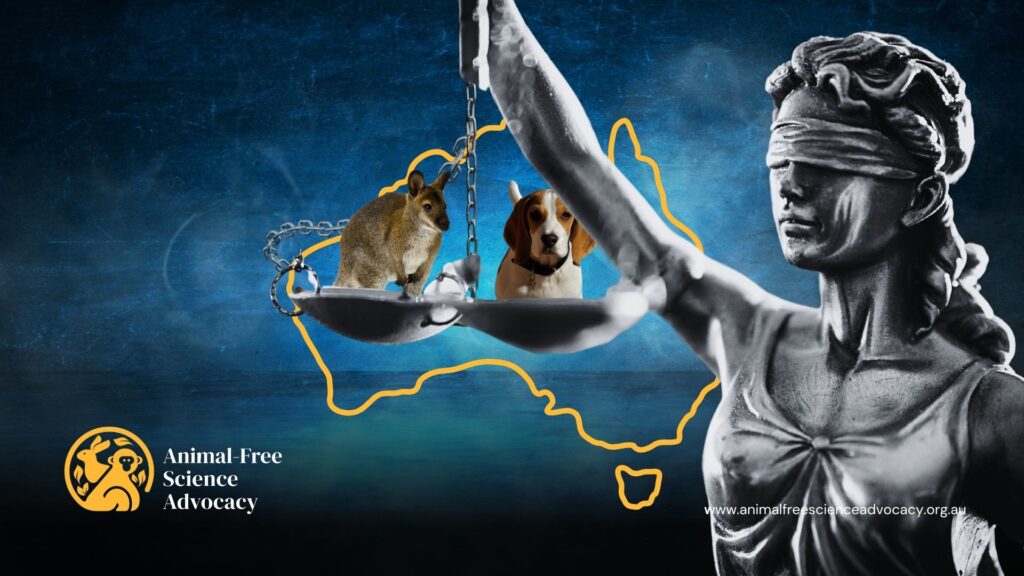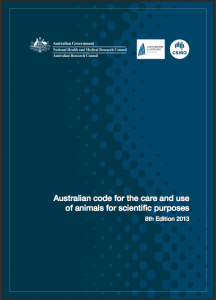

Australian regulations relating to animal use in research and teaching
It is widely believed that the animals used in government sanctioned experiments are protected from cruelty and suffering through State or Territory Animal Welfare Acts, the National Medical Health and Research Council (NHMRC)’s Code of Practice for the Care and Use of Animals for Scientific Purposes, and the Animal Ethics Committees associated with each research institution, whose task is to scrutinise every proposed use of an animal in an experiment.
Sadly, however, these mechanisms fail to prevent cruelty and suffering from occurring. They fail because the medical and scientific researchers, and the facilities they work in, are for the most part self-regulated. There is no independent assessment, little transparency, and next to no accountability within the industry.
In fact, the federal government, through the NHMRC, hands out hundreds of millions of dollars every year, yet does not take responsibility for ensuring its own code of practice is adhered to.
Listen to a podcast episode on legal reform for animals used in research.
Following is a summary of the principle legislation, regulations, and guidelines that relate to animal use in research and teaching in Australia.
State and Territory Legislation
State and Territory legislation specifically relating to the use of animals in research and teaching:
Victoria: Prevention of Cruelty to Animals Act 1986 (ss 25-36 – scientific procedures and breeding)
Prevention of Cruelty to Animals Regulations 2019 (part 5 Scientific Procedures)
New South Wales: Animal Research Act 1985 (accreditation of research establishments, animal suppliers’ licenses)
Animal Research Regulations 2010 (accreditation and licensing, breeding)
Australian Capital Territory: Animal Welfare Act 1992 (ss 25-50 – research, teaching and breeding)
Animal Welfare Regulations 2001 (ss 6-7 – research, teaching and breeding)
Northern Territory: Animal Protection Act 2018
Animal Welfare Regulations currently being finalised
Tasmania: Animal Welfare Act 1993 (ss 27-35 – animal research, suppliers of animals for research)
Animal Welfare (General) Regulations 2013 (s 7 – Inspector may determine if procedure is animal welfare)
Queensland: Animal Care and Protection Act 2001 (ss 48-93 – using animals for scientific purposes)
South Australia: Animal Welfare Act 1985 (ss 16-22 – licenses for teaching and research involving animals)
Animal Welfare Regulations 2012 (ss 11-13 – teaching and research involving animals)
Western Australia: Animal Welfare Act 2002 (ss 6-18 – use of animals for scientific purposes)
Animal Welfare (Scientific Purposes) Regulations 2003 (licensing the use or supply of animals for scientific purposes)
There are various ways in which state and territory legislation could be improved. These include:
1. Increasing resourcing of and powers of external oversight
2. Prohibiting or restricting procedures such as the forced swim test, nose-only inhalation research and lethal dose testing
3. Mandating the replacement of animals where alternative methods exist
4. Ensuring that compliance with the Code is mandatory and there are penalties for non-compliance
5. Mandating right to release for dogs and cats
The status of State and Territory guidelines on rehoming laboratory animals can be found here.
Nationally
All research conducted in Australia that is funded by the National Health and Medical Research Council (NHMRC) must comply with:
– The Australian Code for the Care and Use of Animals for Scientific Purposes (currently in the 8th 2013 edition) (the Code)
and, if the research involves the use of non-human primates:
– The NHMRC Policy on the Care and Use of Non-Human Primates for Scientific Purposes (the Policy), which governs the use of primates in teaching and research.
PLEASE NOTE:
‘The ethical framework and governing principles set out in the Code provide guidance for investigators, teachers, institutions, animal ethics committees and all people involved in the care and use of animals for scientific purposes’. However, compliance with the Code is only formally required if:
(a) the research is funded by the NHMRC. (Compliance with the Code is a prerequisite for receipt of NHMRC funding.)
or
(b) compliance with the Code has been incorporated into the relevant aforementioned state or territory legislation. (The Code may be adopted in whole or in part, or not at all).
Also see a list of NHMRC guidelines relating to the use of animals in research and teaching here, and the Best Practice Methodology in the use of Animals for Scientific Purposes.
Top 3 Asks for National Reform
1. Urgent review of the Code which was last updated in full in 2013
2. A nationally consistent approach for reporting animal use in research across all states and territories
3. Ongoing federal funding for the development and validation of non-animal research methods
Watch a recorded talk talk on the need for reform of the Code.
AFSA Briefings
Please contact us if you would like to receive copies of our briefings on legal reform to strengthen protections for animals used in research.
Cosmetics Animal Testing
Cosmetics are regulated by the Department of Health (Minister of Health and Ageing),under the authority of the Industrial Chemicals Act 2019, which comes into force on 1 July 2020. The Australian Industrial Chemicals Introduction Scheme (AICIS) will replace NICNAS on 1 July 2020 as the new national regulator of the importation and manufacture of industrial chemicals in Australia.
Regulatory Testing
The Therapeutic Goods Administration guidelines for prescription medicines can be found here.
Further information about regulation of human medicines can be found here.
Stay informed
Sign up to our newsletter for all the latest news and SMS campaign alerts.
"*" indicates required fields
© 2024 Animal-Free Science Advocacy | ABN 17 208 630 818 | Privacy Statement | Terms & Conditions
